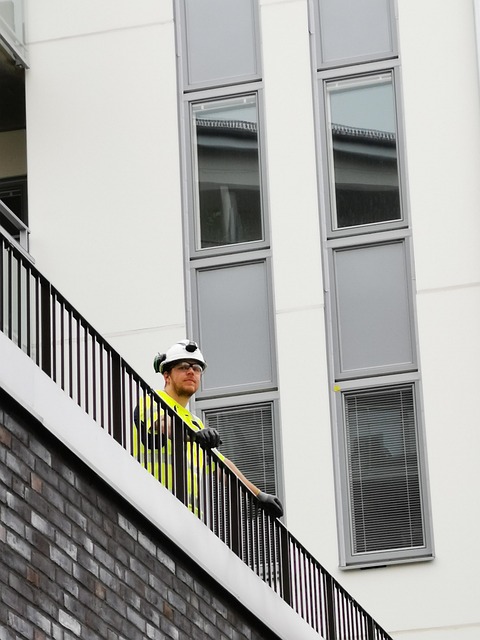Precision-driven CAD drafting transforms architectural design through detailed architectural blueprints, leveraging advanced software for 2D and 3D models with accurate measurements and geometric shapes. This technology enhances collaboration, improves project management, minimizes errors, and streamlines the transition from concept to construction, ensuring exacting standards. Digital blueprints provide clear visual representations, facilitate material estimation, cost calculations, and scheduling, enhancing overall efficiency and reducing delays. Automation within CAD systems further optimizes drafting processes, making precision CAD drafting a game-changer in architectural design and construction management.
Precision-driven Computer-Aided Design (CAD) drafting is transforming architectural practices, enabling creators to bring meticulous vision to life. This article explores how this advanced technology enhances the process of crafting detailed architectural blueprints, from concept to completion. We delve into the benefits, techniques, and tools that architects leverage to ensure accuracy and efficiency. Discover how precision CAD drafting is revolutionizing building projects worldwide, setting new standards for innovation and quality in construction.
Understanding Precision CAD Drafting for Architecture
Precision-driven CAD drafting is a game-changer in architectural design, transforming the way professionals create and visualize detailed architectural blueprints. It involves utilizing advanced computer-aided design (CAD) software to produce highly accurate and intricate 2D and 3D models of buildings and structures. This technology allows architects and designers to capture every nuanced detail, from precise measurements and dimensions to complex geometric shapes, ensuring every aspect of a project is meticulously planned and executed.
By employing precision CAD drafting, architectural designs become more than just conceptual sketches; they evolve into comprehensive digital blueprints that serve as the foundation for construction. This process enhances collaboration among design teams, facilitates better project management, and reduces errors in translation from digital to physical forms. The result is a seamless transition from design concept to construction reality, with every element aligned to exacting standards.
The Benefits of Detailed Architectural Blueprints
Detailed architectural blueprints offer a multitude of benefits that are indispensable in the realm of precision-driven CAD drafting for architectural designs. Firstly, they provide a clear and comprehensive visual representation of the proposed structure, ensuring all stakeholders have a shared understanding of the design intent. This clarity minimizes miscommunication and misinterpretations, which can lead to costly revisions later in the construction process.
Moreover, detailed blueprints facilitate better project management by serving as a crucial reference point for every phase of construction. They enable accurate material estimation, precise cost calculations, and efficient scheduling, thereby enhancing overall project efficiency and reducing potential delays. In today’s digital era, these blueprints can be easily shared and edited, fostering collaboration among architects, engineers, and contractors to create a harmonious and functional built environment.
Techniques and Tools for Accurate Design Creation
In the realm of precision-driven CAD drafting for architectural designs, a myriad of techniques and tools have emerged to ensure the creation of detailed architectural blueprints. One of the fundamental approaches involves utilizing advanced software designed specifically for 3D modeling and design visualization. These programs enable architects to craft intricate digital models with unparalleled accuracy, facilitating the translation of abstract concepts into concrete structural plans.
Furthermore, the integration of laser scanning technology has revolutionized the process. By capturing precise measurements from existing structures or environments, architects can generate highly accurate base maps and detailed architectural blueprints. This not only saves time but also enhances the overall quality of design work. Additionally, the use of computer-aided design (CAD) systems equipped with advanced automation features allows for the seamless creation of symmetrical elements, complex layouts, and precise dimensions, streamlining the drafting process and reducing potential errors.
Real-World Applications: Revolutionizing Building Projects
Precision-driven CAD drafting has transformed the way architectural designs are approached, paving the way for more complex and innovative building projects. With its ability to create detailed architectural blueprints, this technology ensures every aspect of a structure is meticulously planned and visualized before construction begins. Architects and engineers can now collaborate using digital models, allowing for real-time adjustments and a deeper understanding of spatial relationships.
This precision extends beyond aesthetic appeal; it significantly improves project management. By identifying potential issues early on, such as structural conflicts or cost overruns, professionals can mitigate risks and optimize resources. Real-world applications demonstrate that CAD drafting is not just a tool but a game changer, revolutionizing the way buildings are designed, constructed, and managed.
Precision-driven CAD drafting has revolutionized the architectural design process, offering a new level of detail and accuracy. By embracing advanced techniques and tools, architects can create comprehensive and precise detailed architectural blueprints, enhancing collaboration and streamlining construction projects. This transformative approach ensures that every aspect of a building is meticulously planned, leading to more efficient builds and exceptional end results.
